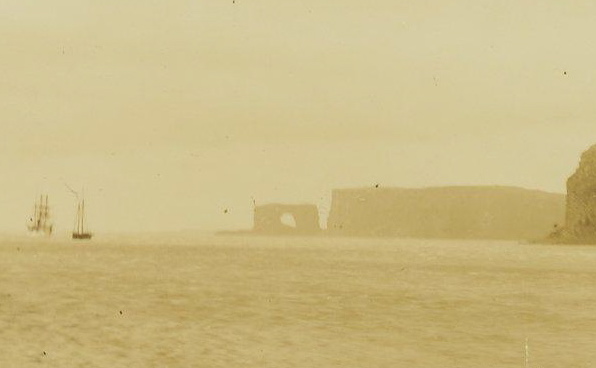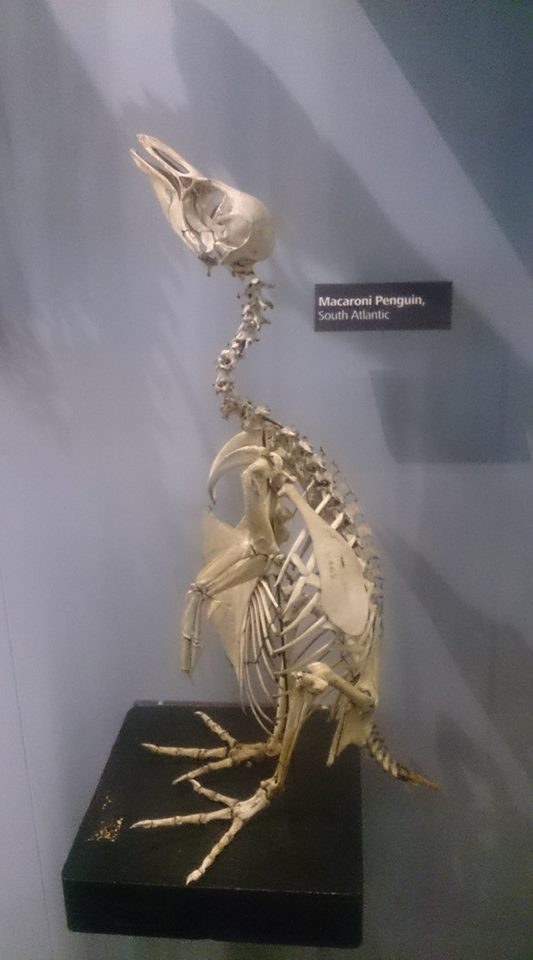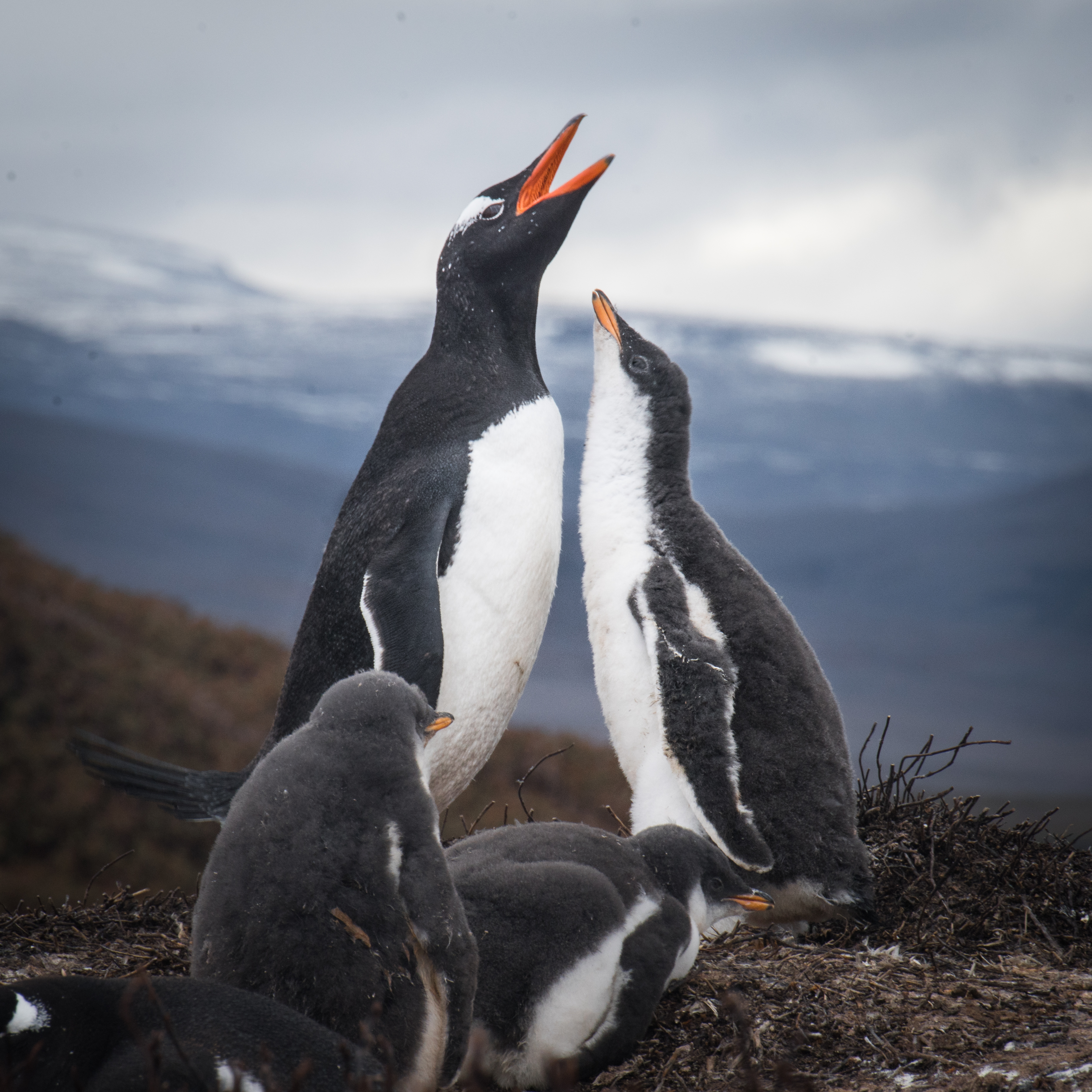|
Péninsule Jeanne D'Arc
Péninsule Jeanne d'Arc, also known as Presqu'île Jeanne d'Arc, (Joan of Arc Peninsula in English) is a peninsula of Grande Terre, the main island of the subantarctic Kerguelen archipelago in the southern Indian Ocean. high Mont Tizard is the highest point of the peninsula.Google Earth Description The peninsula occupies the south-eastern corner of Grande Terre, to which it is connected by the narrow, wide Haulage des Swains isthmus at its north-west end, and by the similarly narrow Haulage des Naufragés isthmus to Presqu'île Ronarc'h towards the eastern end of its north coast. It is about long from west to east and wide. Port Jeanne d'Arc is the site of an abandoned Norwegian whaling station at the western end of the peninsula's north coast that is subject to a cultural heritage conservation program. Important Bird Area The southern coast of the peninsula has been identified as a Important Bird Area (IBA) by BirdLife International because of its breeding seabirds. ... [...More Info...] [...Related Items...] OR: [Wikipedia] [Google] [Baidu] |
Kerguelen Topographic Map-fr
The Kerguelen Islands ( or ; in French commonly ' but officially ', ), also known as the Desolation Islands (' in French), are a group of islands in the subantarctic, sub-Antarctic region. They are among the Extremes on Earth#Remoteness, most isolated places on Earth, with the closest territory being the Heard Island and McDonald Islands territory of Australia located at roughly , and the nearest inhabited territory being Madagascar at more than in distance. The islands, along with Adélie Land, the Crozet Islands, Île Amsterdam, Amsterdam and Île Saint-Paul, Saint Paul islands, and France's Scattered Islands in the Indian Ocean, are part of the French Southern and Antarctic Lands and are administered as a separate district. The islands constitute one of the two exposed parts of the Kerguelen Plateau (the other being Heard Island and the McDonald islands), a large igneous province mostly submerged in the southern Indian Ocean. The main island, Grande Terre, is in area, about ... [...More Info...] [...Related Items...] OR: [Wikipedia] [Google] [Baidu] |
Seabird
Seabirds (also known as marine birds) are birds that are adaptation, adapted to life within the marine ecosystem, marine environment. While seabirds vary greatly in lifestyle, behaviour and physiology, they often exhibit striking convergent evolution, as the same environmental problems and feeding ecological niche, niches have resulted in similar adaptations. The first seabirds evolved in the Cretaceous geological period, period, while modern seabird families emerged in the Paleogene. Seabirds generally live longer, Reproduction, breed later and have fewer young than other birds, but they invest a great deal of time in their young. Most species nest in Bird colony, colonies, varying in size from a few dozen birds to millions. Many species are famous for undertaking long annual bird migration, migrations, crossing the equator or circumnavigating the Earth in some cases. They feed both at the ocean's surface and below it, and even on each other. Seabirds can be highly pelagic, ... [...More Info...] [...Related Items...] OR: [Wikipedia] [Google] [Baidu] |
Important Bird Areas Of Kerguelen
Importance is a property of entities that matter or make a difference. For example, World War II was an important event and Albert Einstein was an important person because of how they affected the world. There are disagreements in the academic literature about what type of difference is required. According to the causal impact view, something is important if it has a big causal impact on the world. This view is rejected by various theorists, who insist that an additional aspect is required: that the impact in question makes a value difference. This is often understood in terms of how the important thing affects the well-being of people. So in this view, World War II was important, not just because it brought about many wide-ranging changes but because these changes had severe negative impacts on the well-being of the people involved. The difference in question is usually understood counterfactually as the contrast between how the world is and how the world would have been withou ... [...More Info...] [...Related Items...] OR: [Wikipedia] [Google] [Baidu] |
Landforms Of The Kerguelen Islands
A landform is a land feature on the solid surface of the Earth or other planetary body. They may be natural or may be anthropogenic (caused or influenced by human activity). Landforms together make up a given terrain, and their arrangement in the landscape is known as topography. Landforms include hills, mountains, canyons, and valleys, as well as shoreline features such as bays, peninsulas, and seas, including submerged features such as mid-ocean ridges, volcanoes, and the great oceanic basins. Physical characteristics Landforms are categorized by characteristic physical attributes such as elevation, slope, orientation, structure stratification, rock exposure, and soil type. Gross physical features or landforms include intuitive elements such as berms, cliffs, hills, mounds, peninsulas, ridges, rivers, valleys, volcanoes, and numerous other structural and size-scaled (e.g. ponds vs. lakes, hills vs. mountains) elements including various kinds of inland and oceanic waterbod ... [...More Info...] [...Related Items...] OR: [Wikipedia] [Google] [Baidu] |
Kerguelen Shag
The Kerguelen shag (''Leucocarbo verrucosus'') is a species of cormorant endemic to the Kerguelen Islands in the southern Indian Ocean, one of the most isolated places on Earth. Many authorities consider it a subspecies of the imperial shag. Range and habitat This species nests on the coast of Grande Terre (the main island of the archipelago), on offshore islands, and on islands in the Golfe du Morbihan. It forages at sea throughout the archipelago, usually within of shore and especially in bays and inlets, though immatures have been seen rarely as far as . Reports from Heard Island and western Australia may be of ship-assisted birds. In the austral summer it feeds among kelp, sometimes at the bottom. Description The Kerguelen shag is long with a wingspan of , making it the smallest blue-eyed shag. The adult's upperparts, tail, and thighs are metallic greenish black; the underbody to the throat is white; and the wing linings are brown. Some individuals have white patches on ... [...More Info...] [...Related Items...] OR: [Wikipedia] [Google] [Baidu] |
White-chinned Petrel
The white-chinned petrel (''Procellaria aequinoctialis'') also known as the Cape hen and shoemaker, is a large shearwater in the family Procellariidae. It ranges around the Southern Ocean as far north as southern Australia, Peru and Namibia, and breeds colonially on scattered islands. The white-chinned petrel was formerly considered to be conspecific with the spectacled petrel (''Procellaria conspicillata''). Taxonomy In 1747 the English naturalist George Edwards included an illustration and a description of the white-chinned petrel in the second volume of his ''A Natural History of Uncommon Birds''. He used the English name "The great Black Peteril" and based his hand-coloured etching on a preserved specimen that had been brought to London. He believed that it had been collected near the Cape of Good Hope. When in 1758 the Swedish naturalist Carl Linnaeus updated his ''Systema Naturae'' for the tenth edition, he placed the white-chinned petrel with the other petrels in the ... [...More Info...] [...Related Items...] OR: [Wikipedia] [Google] [Baidu] |
Light-mantled Albatross
The light-mantled albatross (''Phoebetria palpebrata'') also known as the grey-mantled albatross or the light-mantled sooty albatross, is a small albatross in the genus ''Phoebetria'', which it shares with the sooty albatross. The light-mantled albatross was first described as ''Phoebetria palpebrata'' by Johann Reinhold Forster, in 1785, based on a specimen from south of the Cape of Good Hope. Physiology Light-mantled albatrosses share some identifying features with other Procellariiformes. They have nasal tubes on the upper bill called naricorns, though with albatrosses these are on the sides of the upper mandible rather than the top. They also have a salt gland above the nasal passage which excretes a concentrated saline solution to maintain osmotic balance, due to the amount of seawater imbibed. The bills of the Procellariiformes are unique in that they are covered with from seven to nine horny plates. These birds produce a stomach oil made up of wax esters and triglyceride ... [...More Info...] [...Related Items...] OR: [Wikipedia] [Google] [Baidu] |
Kerguelen Tern
The Kerguelen tern (''Sterna virgata'') is a tern of the southern hemisphere. This seabird mainly breeds colonially in the Kerguelen Islands, as its common name implies. However, smaller colonies are also found in the Prince Edward Islands (i.e. Prince Edward and Marion) and Crozet Islands. The total number of individuals is from 3,500 to 6,500 birds, although there is no recent data from the main colony at Kerguelen. These birds do not inhabit Kerguelen proper, instead nesting on islets free of feral cats. During bad weather, they are known to abandon their colonies. Kerguelen terns are among the least-ranging of all typical terns. They generally do not reach far into the seas near their breeding grounds. These birds eat fish and marine invertebrates, especially those found in beds of the seaweed Macrocystis spp. They sometimes also hunt insects on land and catch fish from rivers on Kerguelen. There are two subspecies In Taxonomy (biology), biological classificatio ... [...More Info...] [...Related Items...] OR: [Wikipedia] [Google] [Baidu] |
Northern Giant Petrel
The northern giant petrel (''Macronectes halli''), also known as Hall's giant petrel, is a large, predatory seabird of the southern oceans. Its range overlaps broadly with the range of the related southern giant petrel (''Macronectes giganteus''), albeit slightly further to the north. Taxonomy The northern giant petrel was species description, formally described in 1912 by the Australian born ornithologist Gregory Mathews as a subspecies of the southern giant petrel with the trinomial name ''Macronectes giganteus halli''. The specific epithet ''halli'' was chosen to honour the Australian ornithologist Robert Hall (ornithologist), Robert Hall who had described the birds breeding on the Kerguelen Islands. The northern giant petrel is now considered to be a separate species and has the binomial name ''Macronectes halli''. It is monotypic: no subspecies are recognised. The genus name combines the Ancient Greek ''makros'' meaning "great" and ''nēktēs'' meaning "swimmer". The name "pe ... [...More Info...] [...Related Items...] OR: [Wikipedia] [Google] [Baidu] |
Sooty Albatross
The sooty albatross (''Phoebetria fusca''), also known to sailors as the Quaker, is a species of marine bird belonging to the albatross family Diomedeidae. It is a medium-sized albatross that sports a sooty-brown or sooty-black color. It can be found in the southern Atlantic Ocean, the southern Indian Ocean, and the Southern Ocean. This bird scavenges for squid, fish, and carrion. Like other albatrosses, these birds mate for life and return to the same breeding spots every season. A single pair will mate every other year on a variety of islands in the southern Atlantic Ocean and the southern Indian Ocean islands. This bird is an endangered species and conservation efforts are taking place. Taxonomy The sooty albatross belongs to the genus '' Phoebetria'' of which there are two species: '' P. palpebrata'' (Foster, 1785) and ''P. fusca'' (Hilsenberg, 1822). The two species were discovered separately but were not placed in the same genus until 1913, which was later confirmed by cy ... [...More Info...] [...Related Items...] OR: [Wikipedia] [Google] [Baidu] |
Macaroni Penguin
The macaroni penguin (''Eudyptes chrysolophus'') is a species of penguin found from the Subantarctic to the Antarctic Peninsula. One of six species of crested penguin, it is very closely related to the royal penguin, and some authorities consider the two to be a single species. It bears a distinctive yellow crest on its forehead. Its face and upperparts are black and sharply delineated from the white underparts. Adults weigh on average and are in length. The male and female are similar in appearance; the male is slightly larger and stronger with a larger beak, bill. Like all penguins, it is flightless, with a streamlined body and wings stiffened and flattened into flippers for a marine lifestyle. Its diet consists of a variety of crustaceans, mainly krill, as well as small fish and cephalopods; the species consumes more marine life annually than any other species of seabird. These birds moult once a year, spending about three to four weeks ashore, before returning to the sea. ... [...More Info...] [...Related Items...] OR: [Wikipedia] [Google] [Baidu] |
Gentoo Penguin
The gentoo penguin ( ) (''Pygoscelis papua'') is a penguin species (or possibly a species complex) in the genus ''Pygoscelis'', most closely related to the Adélie penguin (''P. adeliae'') and the chinstrap penguin (''P. antarcticus''). The earliest scientific description was made in 1781 by Johann Reinhold Forster with a type locality in the Falkland Islands. The species calls in a variety of ways, but the most frequently heard is a loud trumpeting, which the bird emits with its head thrown back. Names The application of "gentoo" to the penguin is unclear. '' Gentoo'' was an Anglo-Indian term to distinguish Hindus from Muslims. The English term may have originated from the Portuguese ''gentio'' ("pagan, gentile"). Some speculate that the white patch on the bird's head was thought to resemble a turban. It may also be a variation of another name for this bird, "Johnny penguin", with Johnny being the Spanish counterpart of and sounding vaguely like gentoo. The Johnny rook, a pr ... [...More Info...] [...Related Items...] OR: [Wikipedia] [Google] [Baidu] |






